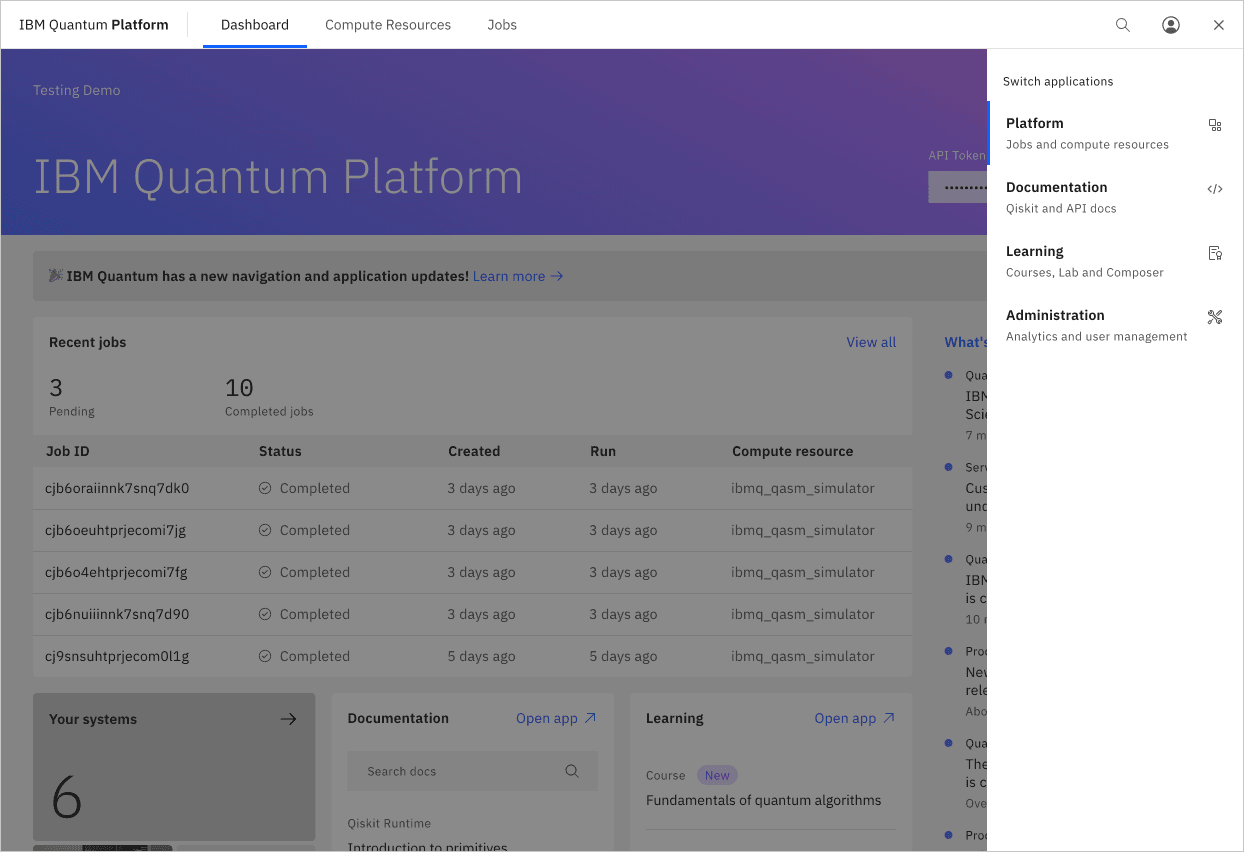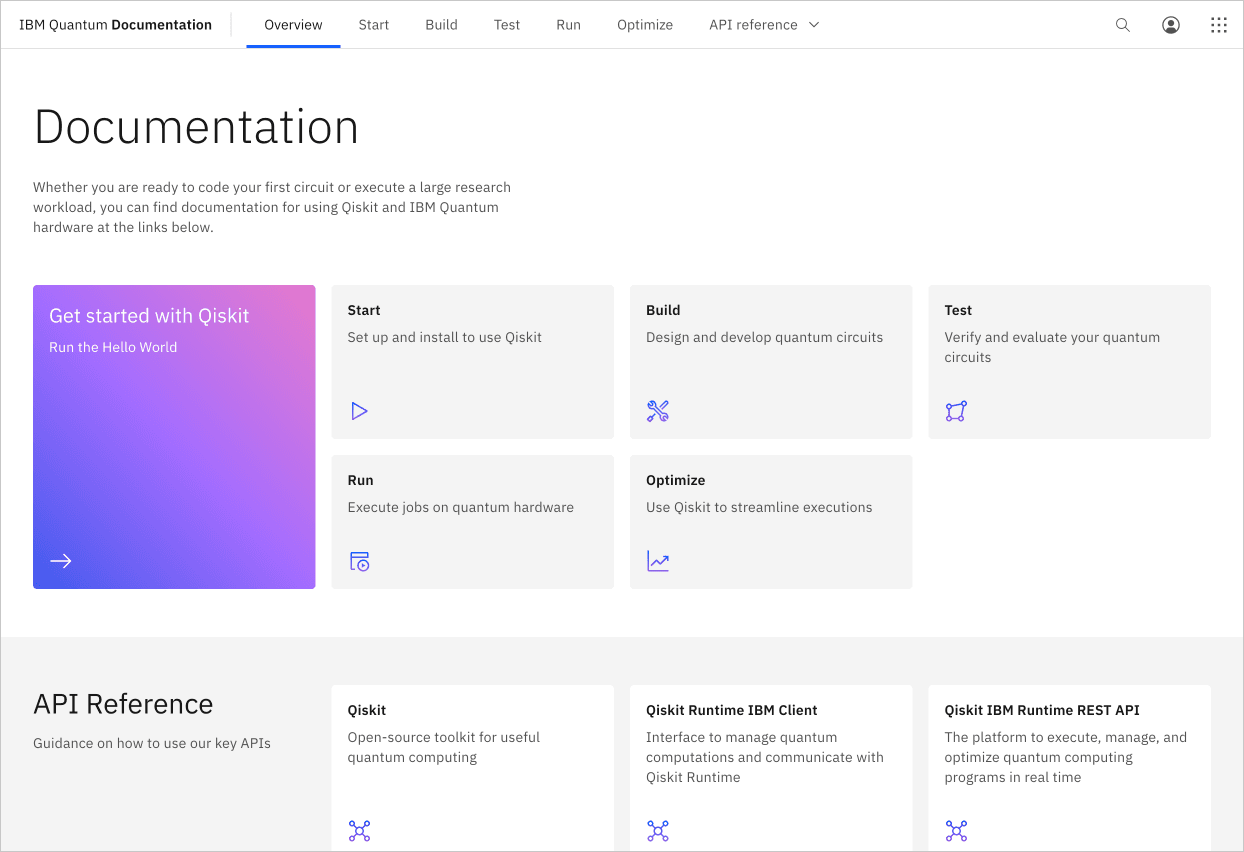IBM Quantum updates as of August 18, 2023
In order to bring useful quantum computing to the world, quantum computing must be easy to use. Therefore, to support this mission, we are releasing a number of improvements to our product experience, while gathering all of your IBM Quantum™ resources into one easy-to-access location. Our goal is to build a mature and stable quantum programming experience.
With your feedback, we have implemented updates that make it easier to onboard to quantum, and to find the documentation you need to work with our technology. Learn more about the specific updates below.
Over the next few months, expect to see additional changes across the product experience. This will include the consolidation of documentation and the addition of new learning resources.
Navigation updates
IBM Quantum is now composed of four major workspaces: Platform, Documentation, Learning, and Administration. To switch between them, click the "nine dot" icon in the upper right corner of the interface.
For each tool, content and features are organized within tabs in the header and each contains resources to help you achieve a specific objective.
The search experience has been updated to provide more context about results, and is accessible via the search icon in the header and by the text shortcut "/". In the search modal, results can be filtered by content area to aid in discoverability.


Platform
The IBM Quantum Platform dashboard has been redesigned provide more useful information about recent jobs, plus helpful links to Documentation and Learning.
Documentation
Qiskit Runtime, API reference, and important circuit building documentation have been consolidated and reorganized to support natural workflows.
Content structure
The content is now structured around the phases of quantum research and development, from start to optimize, for an intuitive documentation experience.


API references
Four API references are now available:
Qiskit
Qiskit is an open-source SDK for working with quantum computers at the level of extended quantum circuits, operators, and algorithms.
Qiskit Runtime REST API
Qiskit Runtime is available as a RESTful API, making it easy for REST designed workflows to make use of Qiskit Runtime. Learn more about REST at the REST overview page.
Qiskit Runtime IBM Client
A Python package that allows users to optimize workloads and efficiently execute them on quantum systems at scale. The programming model extends the existing interface in Qiskit with a set of new primitives.
Qiskit IBM Provider
A Python package that uses the backend.run() method for using the IBM Quantum services.
Learning
IBM Quantum Learning is a new experience that offers interactive courses, tutorials, and tools to help you build a foundation in quantum, and experiment with the latest IBM Quantum hardware and software technology.
Courses
Courses on the Basics of Quantum Information, Variational Algorithm Design, Fundamentals of Quantum Algorithms, and more are now available. New material is being created all the time, so check back often. Sign in to track your progress as you learn.


Tutorials
Looking to start with code for a particular topic? Explore guided tutorials in the catalog that introduce how to leverage Qiskit Runtime for your research.
Quantum Lab & Quantum Composer
IBM Quantum Lab and IBM Quantum Composer are now located in Learning. Create and run experiments in a notebook environment with Lab, and use Composer as a visual circuit builder.
Administration updates
Administration has been updated to leverage the same tab-based navigation as Platform, Learning, and Documentation. Please note that Administration will only appear in the navigation menu if you are signed in and have permission to access it.
Reservations & admin documentation
Individuals with permission to create and manage reservations on quantum systems can now do so within Administration. Documentation specific to managing user access and compute resource allocations has been migrated to Administration as well, where it can be accessed via a tab in the toolbar or the global search experience.